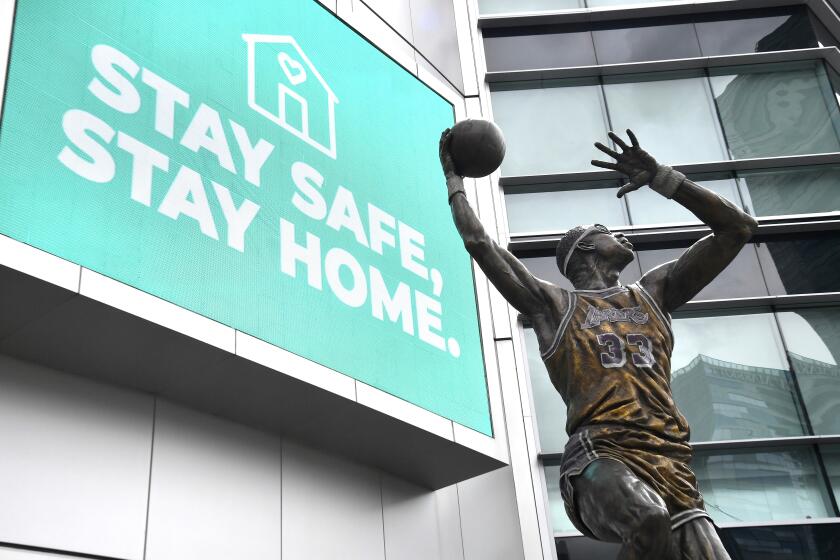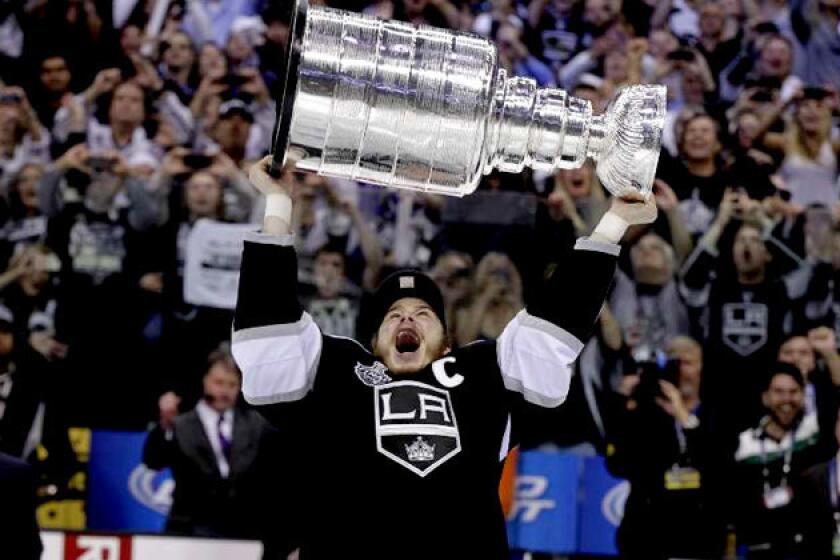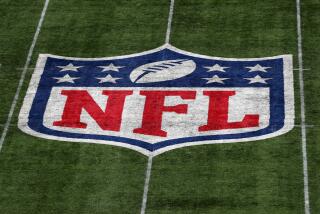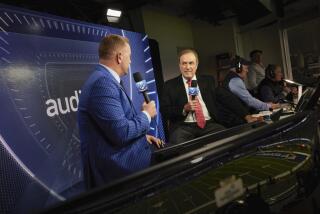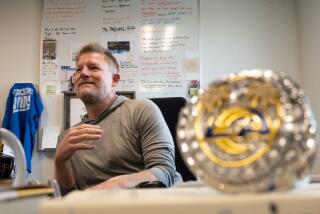With the prospect of empty stadiums, how will the NFL move forward?
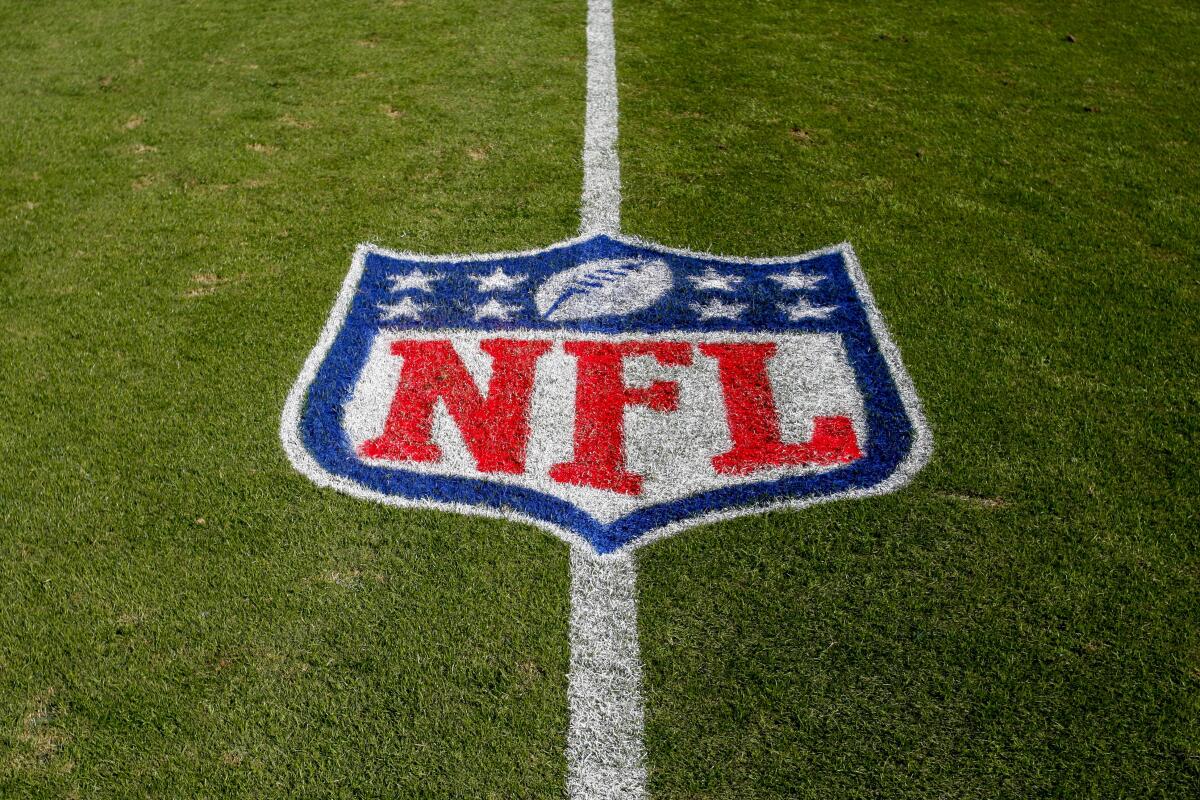
- Share via
Fourth in a series of articles about the 2020 futures of major sports leagues.
Preposterous. Unthinkable. A science-fiction movie. How could meaningful pro football games be played in cavernous NFL stadiums filled with oceans of empty seats?
Steve Young knows how.
“I’ve lived it,” said the Hall of Fame quarterback who began his career with the Los Angeles Express of the USFL. “I played in the Coliseum in front of 10,000 people. It’s so quiet I had to whisper in the huddle. I actually had to move the huddle back. Defensive guys were like, ‘I think he said flanker drive.’ ”
When it comes to easy answers about how to restart the NFL in the age of COVID-19, the silence is deafening.
Unlike other leagues that have stopped cold, the NFL has tried to cobble together some semblance of a normal offseason. It didn’t postpone free agency or move the draft, instead turning that into an entirely virtual event with commissioner Roger Goodell running it from his basement, and coaches, general managers and prospects live streaming from their homes. It was an overwhelming success.
A series examining the challenges major sports leagues, teams and athletes are facing amid the COVID-19 pandemic.
On Thursday, the NFL released its 2020 schedule, operating under the tentative assumption that a full season of games can be played, even as stadiums in L.A. and Las Vegas are still under construction that has been slowed by the pandemic.
“When the NFL puts out its schedule, it’s doing the right thing by starting with the hypothesis that you can start as though there were no delay to the season,” said Frank Supovitz, the NFL’s former senior vice president of events. “But my experience with the National Football League was they study every contingency. They are not leaving anything to chance.”
Truckloads of questions are unanswered.
“There is no way they are opening the season with 60,000 people in a building,” said Joe Banner, former president of the Philadelphia Eagles and chief executive of the Cleveland Browns. “That in my mind is a zero possibility.”
A realistic best-case scenario involves games being played in either empty venues or before greatly reduced crowds with social-distancing guidelines enforced.
The Miami Dolphins have proposed “capacity” crowds of 15,000 at Hard Rock Stadium, which normally can seat 80,120 and played host to this year’s Super Bowl. The ambitious plan reportedly features spots on the sidewalk at entry gates to keep fans at least six feet apart, and people ordering food at their seats then going to pick it up rather than forming lines at concession stands.
The potential revenue losses are staggering, even though the 32 teams each received $255 million in TV money last year.
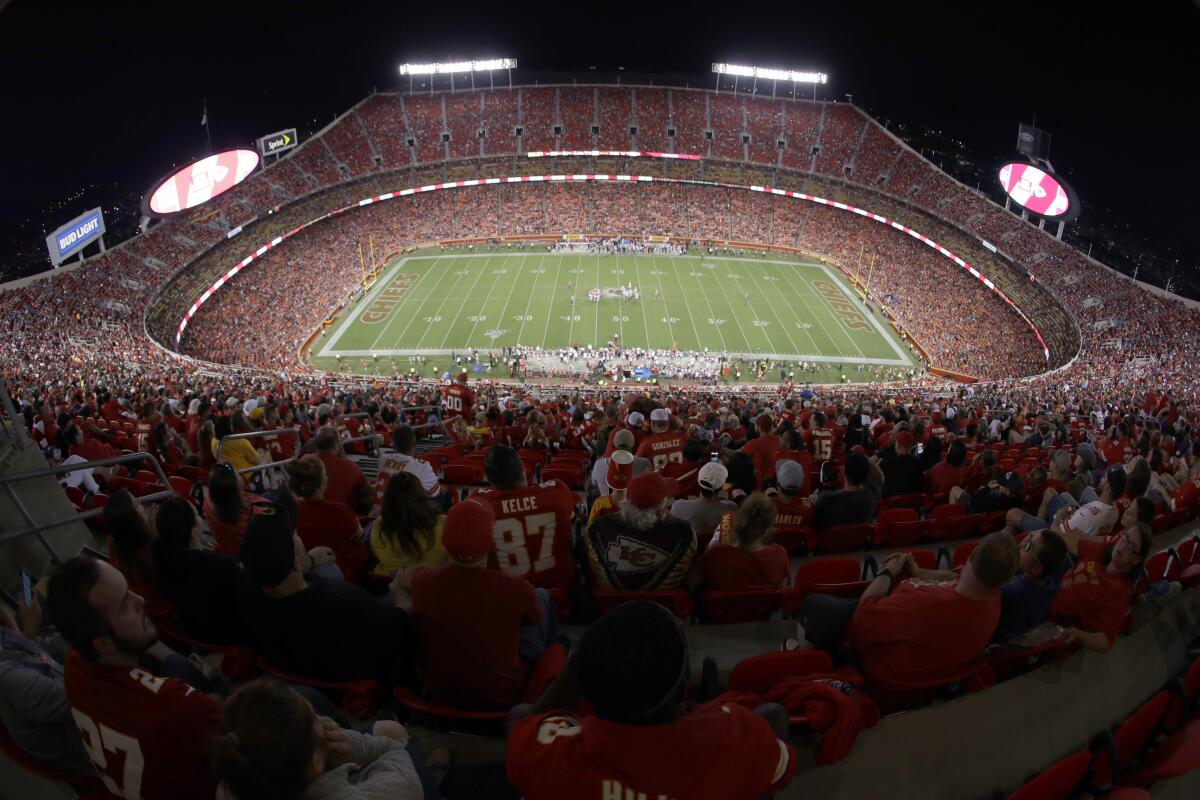
“The economic consequence is very significant,” Banner said. “It is gate [ticket sales revenue], which, depending on what city you’re in, is from something significant to something huge. That’s all your club seats and your suites and everything else. It’s not just your general admission. It’s parking revenue, concession revenue. Every element. Put all those things together and add it to the gate, and it’s very sizable.”
Like a boulder dropped in a pond, the resulting ripples would extend far and wide.
Players have a nearly 50% stake in those local revenue streams, so they would be affected right along with team owners. Teams almost certainly would be far more careful with their money, especially because their expenses wouldn’t go down during this rough stretch and might even go up.
“Are we going to see a year when there’s a really small number of players who are either signed or extended?” Banner said. “Because the strain on cash flows in many of the markets will be really consequential.”
He gave an example.
“The Browns are talking about re-signing Myles Garrett,” Banner said, referring to the defensive end taken No. 1 overall in 2017. “In a year when you have depressed revenue with equal or increased costs, that’s a big step to lay out a signing bonus, even if you defer a big chunk of it.”
“I sure as hell know the broadcast feeds off it. That’s just a constant noise that’s under our voices that, if you take it out of the equation, I just think it makes the broadcast flat.”
— Joe Buck, Fox play-by-play announcer, on the crowd’s energy at games
Teams also have to consider the enormously lucrative sponsorship and naming-rights deals, which are loaded with requirements and expectations from companies that sometimes pay tens of millions of dollars for them.
Said Banner: “If you’re Pepsi and you bought a sponsorship, and you paid $2 million for it, and it includes weekly TV shows and game signages that you assume 70,000 or 80,000 people are seeing, and now it’s only 20,000, do the teams have to go back and give them a refund or a credit, or deferred payments?
“Every one of those deals has a very clear list of all the benefits you get. And, by the way, it includes a suite, club seats, stadium signage. Those things may not exist.”
The league already is bracing for the economic impact. Goodell has voluntarily forfeited his salary until league operations resume. Furloughs and pay cuts are underway at NFL Network and NFL Films. All team facilities are closed, although the league issued protocols Wednesday in advance of the safe and phased reopening of those venues.
Meanwhile, the networks are trying to figure the best way to present games played in empty stadiums, including weighing the merits of augmenting broadcasts with artificial crowd noise. Fox play-by-play announcer Joe Buck said that noise is an essential element.
“I think these players feed off that a little bit, as corny as it sounds,” Buck said. “I sure as hell know the broadcast feeds off it. That’s just a constant noise that’s under our voices that, if you take it out of the equation, I just think it makes the broadcast flat.
“I have the crowd noise as loud as I can in my headset because I don’t want to over-talk. If people are at home experiencing crowd noise, it brings them into the stadium. If you take that out altogether and it’s just an announcer talking, you could be watching C-SPAN and it would be the same thing.”
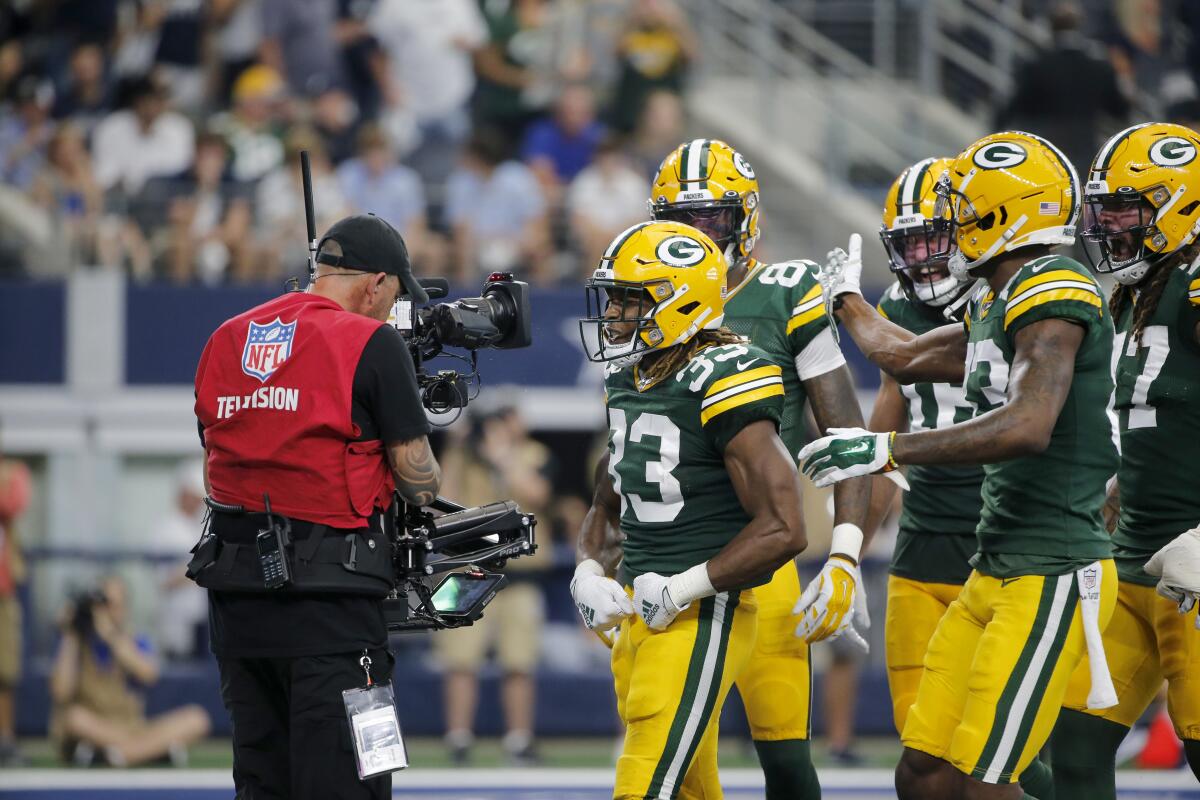
Not everyone would advocate for simulated crowd noise.
“Could you do that? Yes. Is it the right thing? I don’t know,” said Supovitz, now president of New York-based Fast Traffic Events and Entertainment. “Every camera shot is going to show an empty stadium, so what’s the point in that? I think it makes it inauthentic, and the one thing about American football is its authenticity.”
NBC, for one, is investigating different technologies that could use crowd noise — piped into the broadcast, although not necessarily the actual stadium — generated remotely by fans. It’s been done before, one example being for a Tunisian soccer team that had to play in empty stadiums in 2013, when no public gatherings were allowed amid fears of violence.
Fans of the team used an app on their phones and other devices that allowed them to simulate claps, cheers and boos with a push of a button. Those collective sounds were pumped through speakers on the field for the players to hear.
“It would be authentic because it would be generated by viewers,” said Fred Gaudelli, executive producer of NBC’s “Sunday Night Football.” “We are in the early stages of trying to figure out how we could do that. … I like fan engagement and I like authenticity. There’s myriad problems that would have to be worked out and solved for that to happen, but that’s what we’re looking at right now.”
In order to prepare for games without crowds, Gaudelli and his crew have been studying broadcasts of NFL preseason and Alliance of American Football games “to try to get a sense of, hey, what’s going to have to change in terms of our coverage?”
In some cases, networks have used tighter camera shots and lower angles to avoid showing empty stands.
The NBA continues to review its options for resuming play, and that includes some form of finishing the regular season ahead of the playoffs.
From the perspective of players, the lack of crowd noise might be strange but not entirely unfamiliar.
“I feel like players would adjust to that pretty well,” Rams tackle Andrew Whitworth said. “From an energy standpoint and for people working around it, it could be weird. But for us, scrimmages and practices we hold all the time. We practice for 2½ hours. So when we go out in camp, once it shuts down to the public, that’s pretty similar to what we’re doing.”
In some ways, he said, it would level the playing field.
“You look at New Orleans and Seattle, and that home-field advantage has been significant for them,” Whitworth said. “Tough places to go in. Eliminate some of that, and that’s a massive thing.”
But for Whitfield — and the NFL as a whole — the biggest question isn’t about empty stadiums or piped-in sound or lost revenue. It’s how can you reliably stage games with the very real possibility that one infected player could take down the entire league?
“The truth is, if we still live in a world where you’ve got to have 14-day quarantines, then as players we’re still human beings,” he said. “One guy gets it, and you’re done for two weeks. Then every single guy on the team, every team you’ve played, every person you’ve contacted …
Because the NHL relies more on gate revenue than the other major sports leagues, it will try everything possible to finish the season, columnist Helene Elliott says.
“One player in the huddle gets it, that entire huddle’s gone now. So what do you do in the NFL when you only have 53 guys on a roster and you’ve just lost your entire starting offense? I don’t understand how you can even operate like that.”
It’s like pulling a loose thread on a sweater. It’s very easy to imagine the whole operation unraveling.
“What if it’s a Sunday night or Monday night game when there’s no other game on and a team is infected?” Banner said. “Is there just no football that night? You just have a window that’s vacant? There’s a zillion questions that the NFL has teams of people looking at. Those people are putting together all the scenarios they possibly can, and then coming up with at least a plan.
“Once the NBA canceled their season, I’m willing to bet anything that the NFL started having all these meetings about all the hypotheticals that could possibly come up. We’ve never seen this kind of uncertainty.
“It’s very scary. Nobody wants to get sick. Everybody is trying to do the right thing.”
More to Read
Go beyond the scoreboard
Get the latest on L.A.'s teams in the daily Sports Report newsletter.
You may occasionally receive promotional content from the Los Angeles Times.


